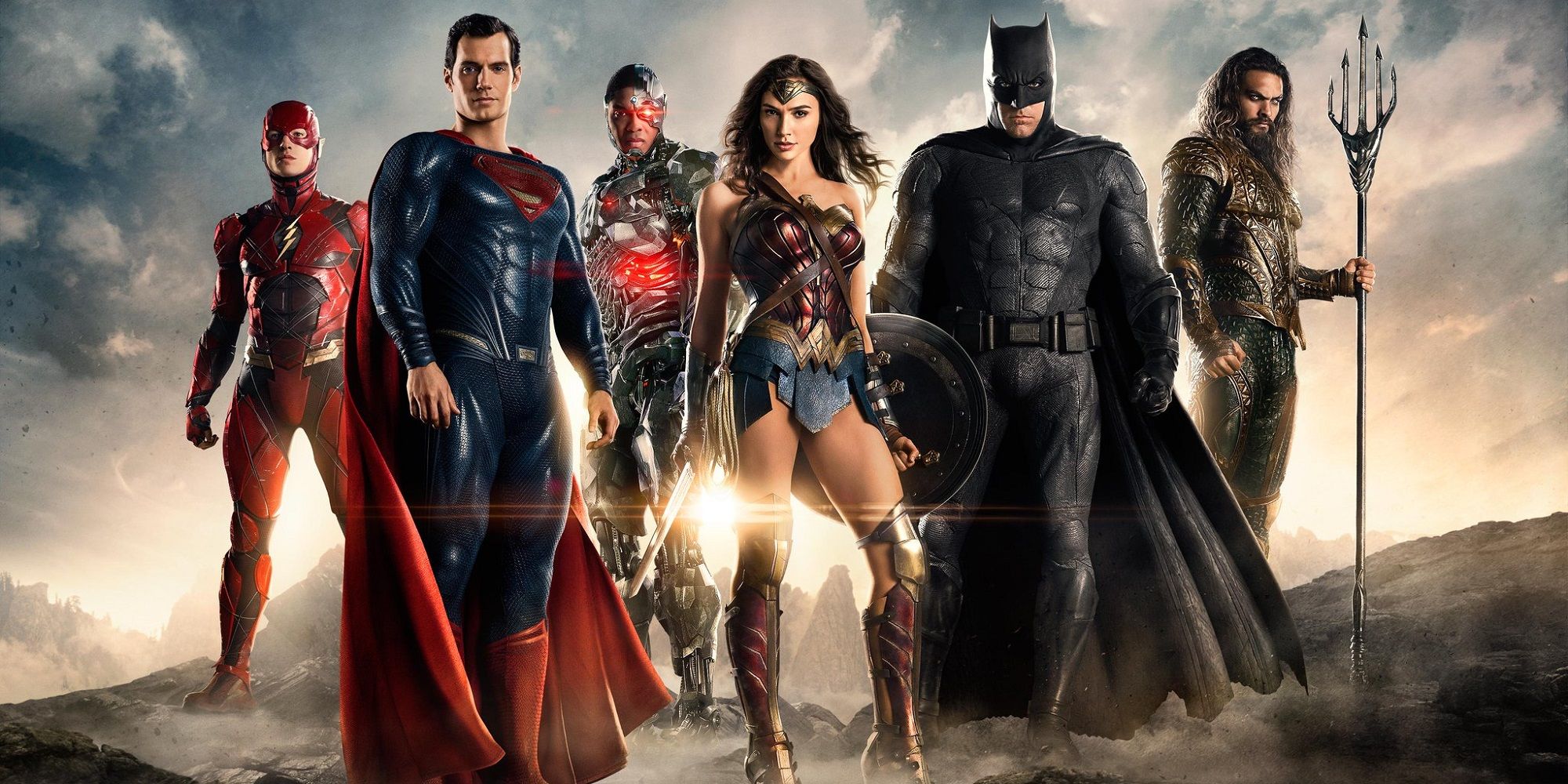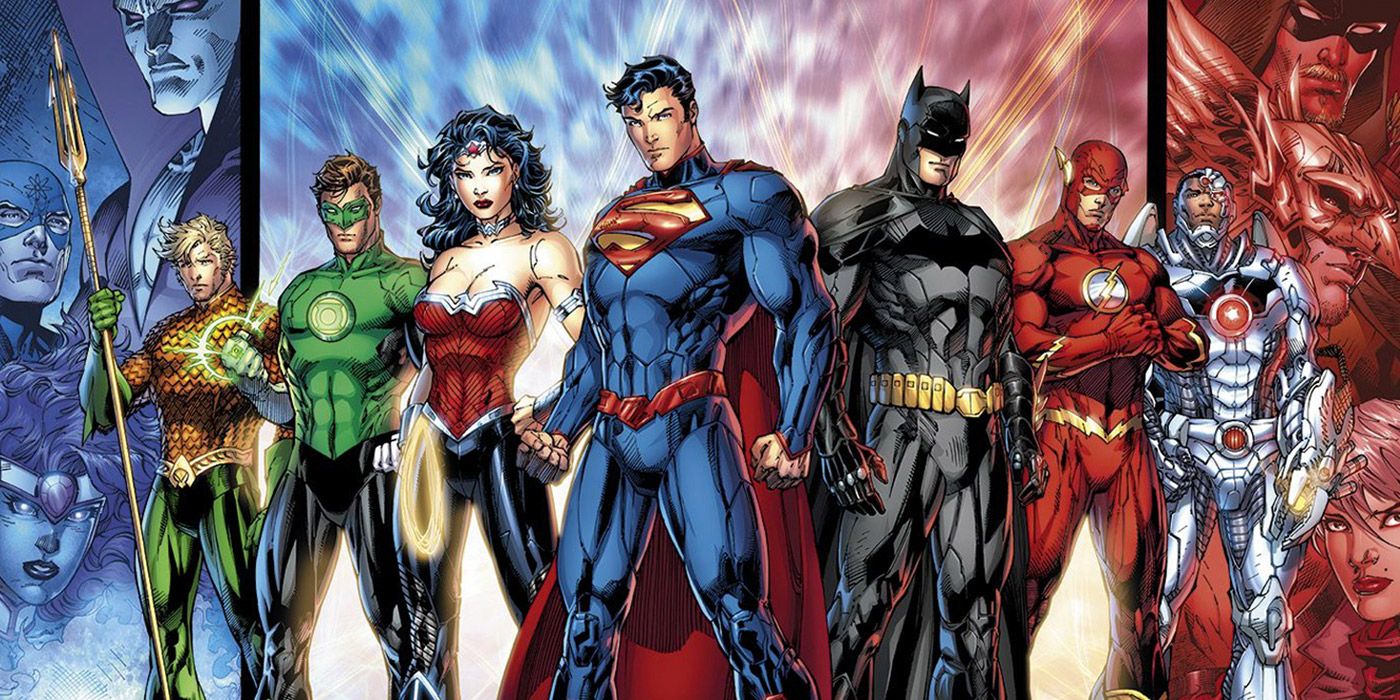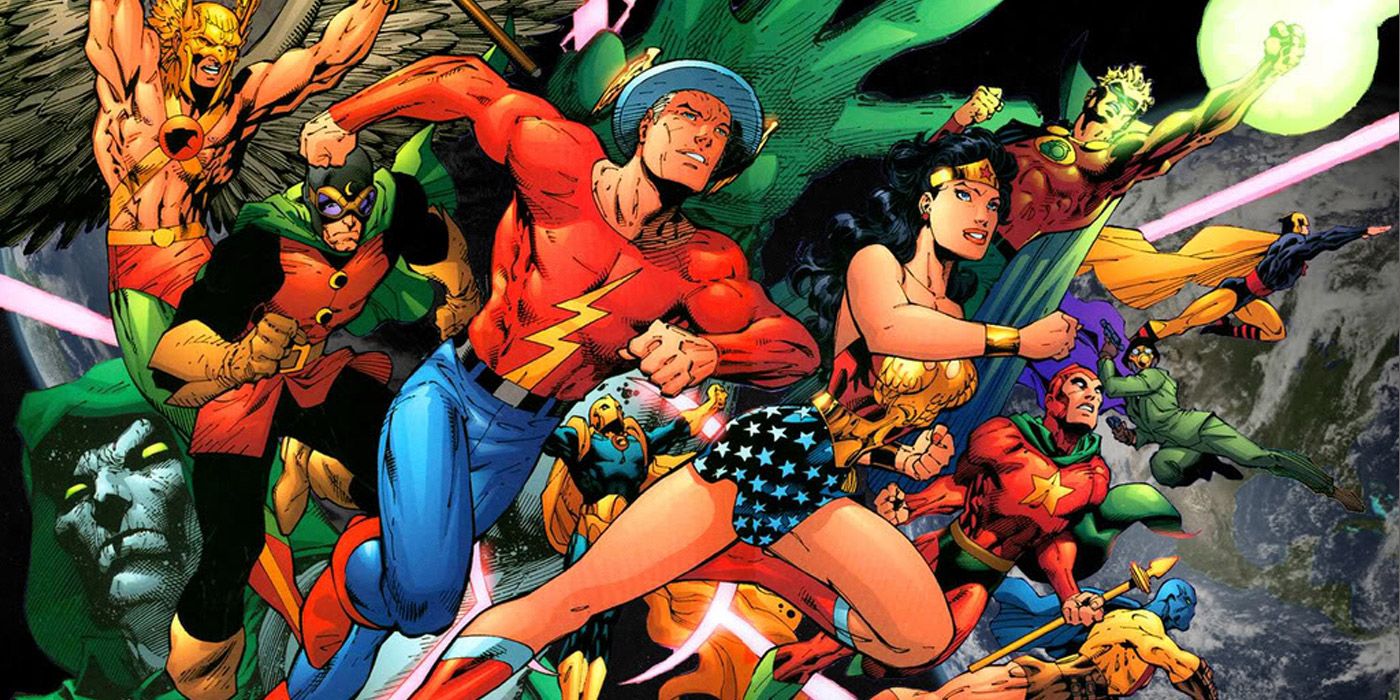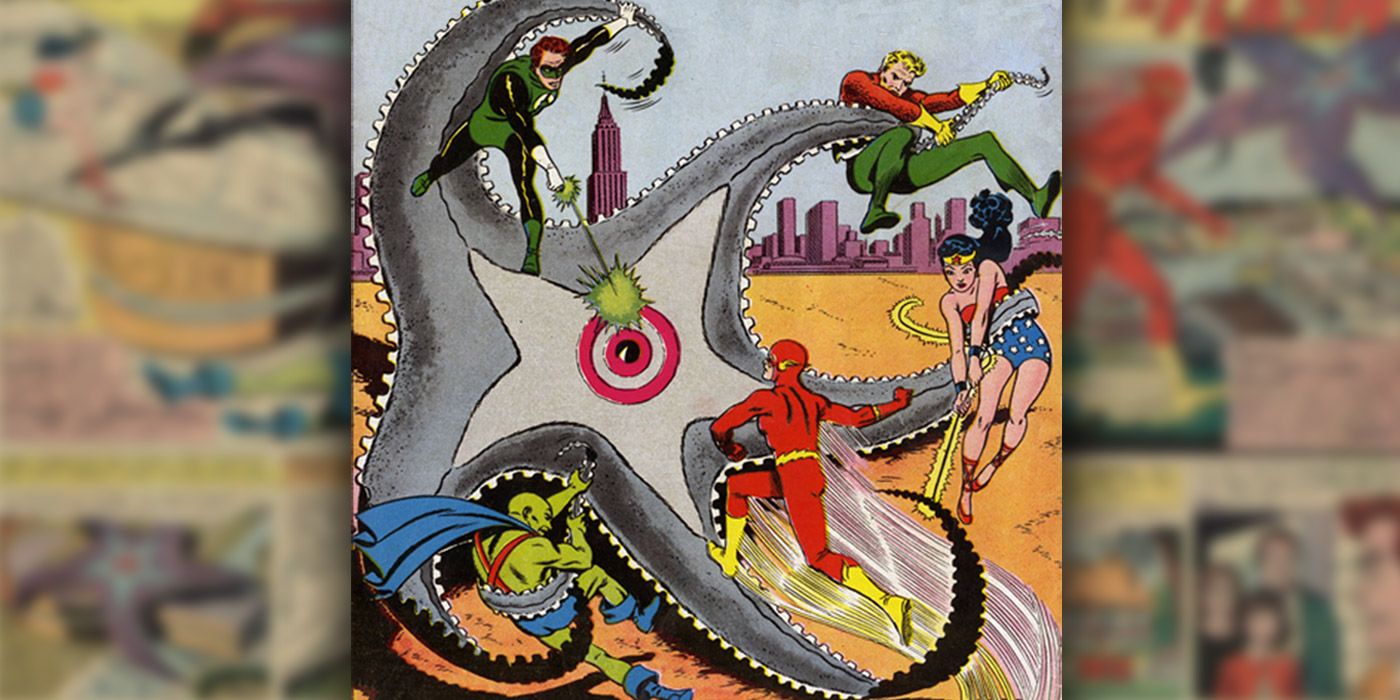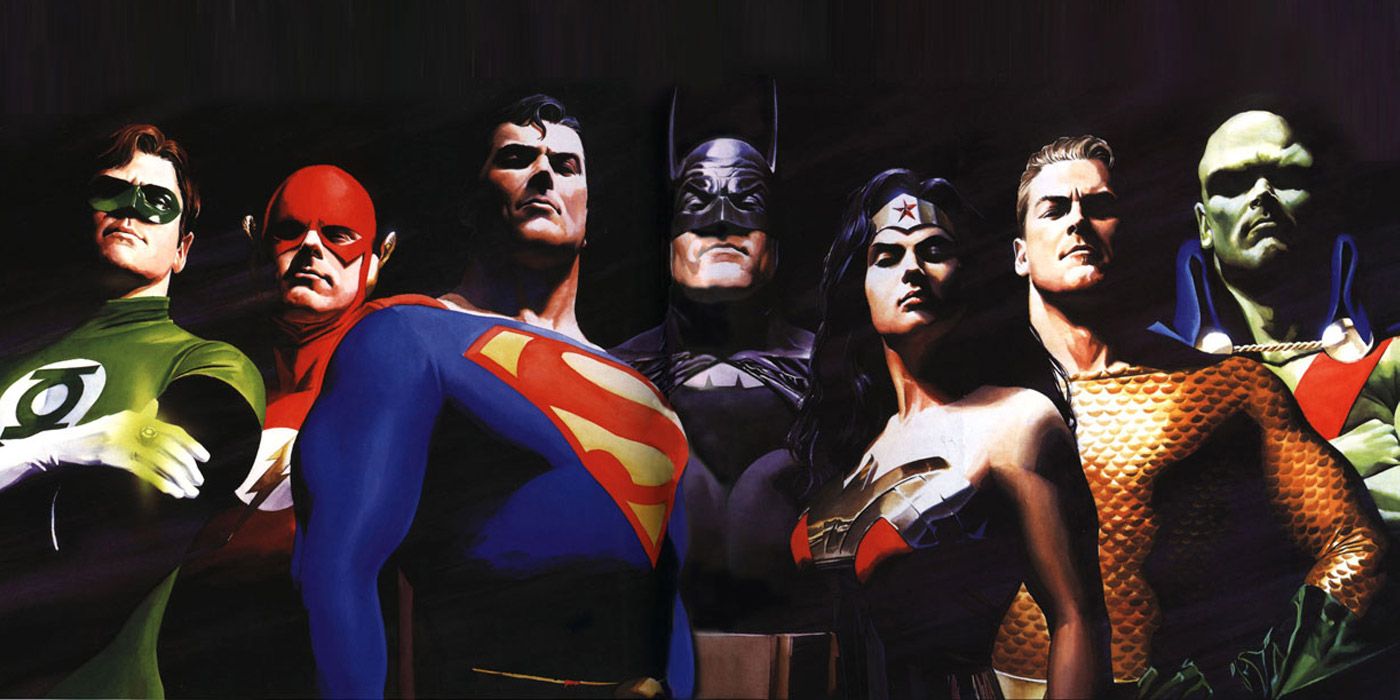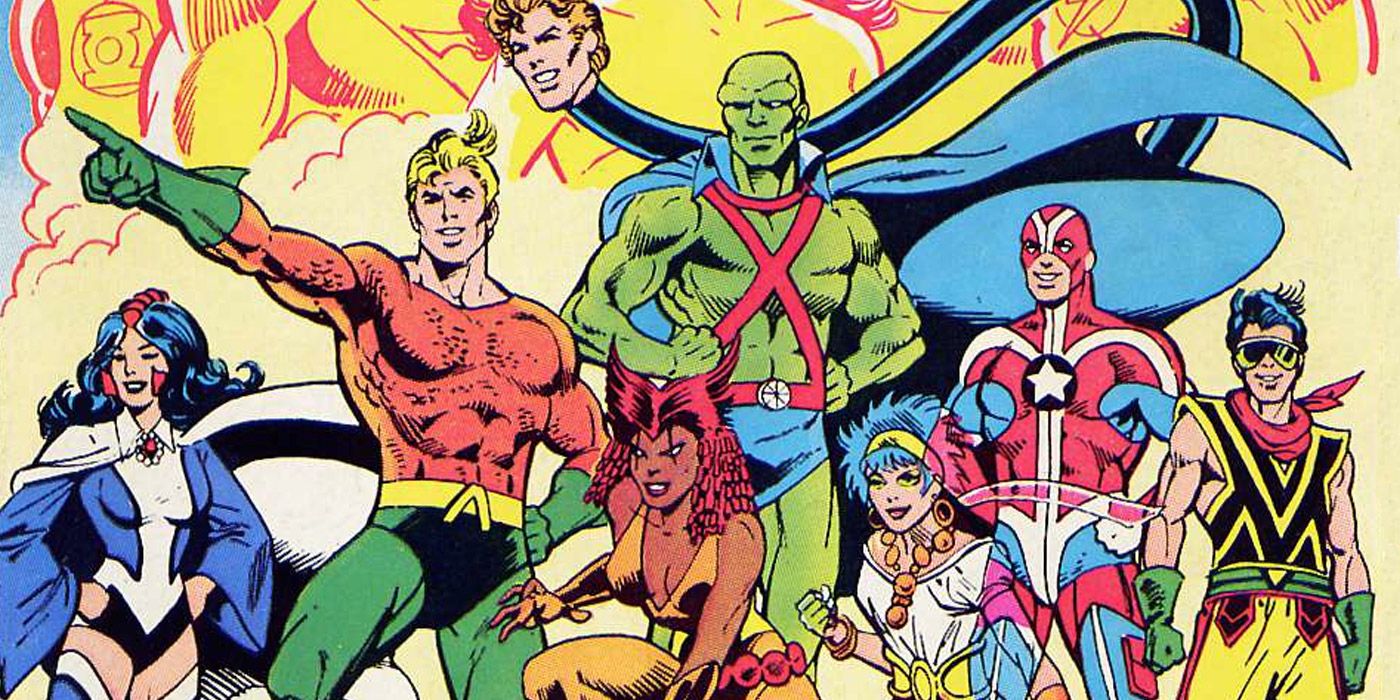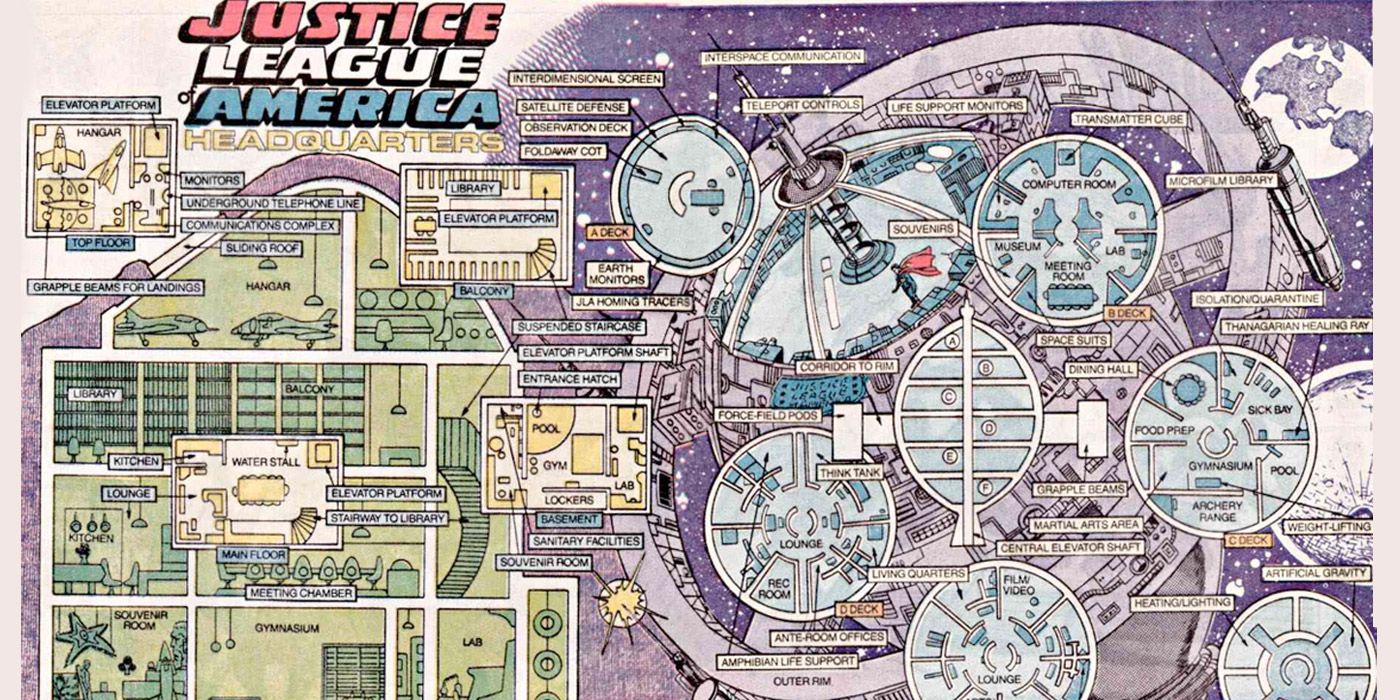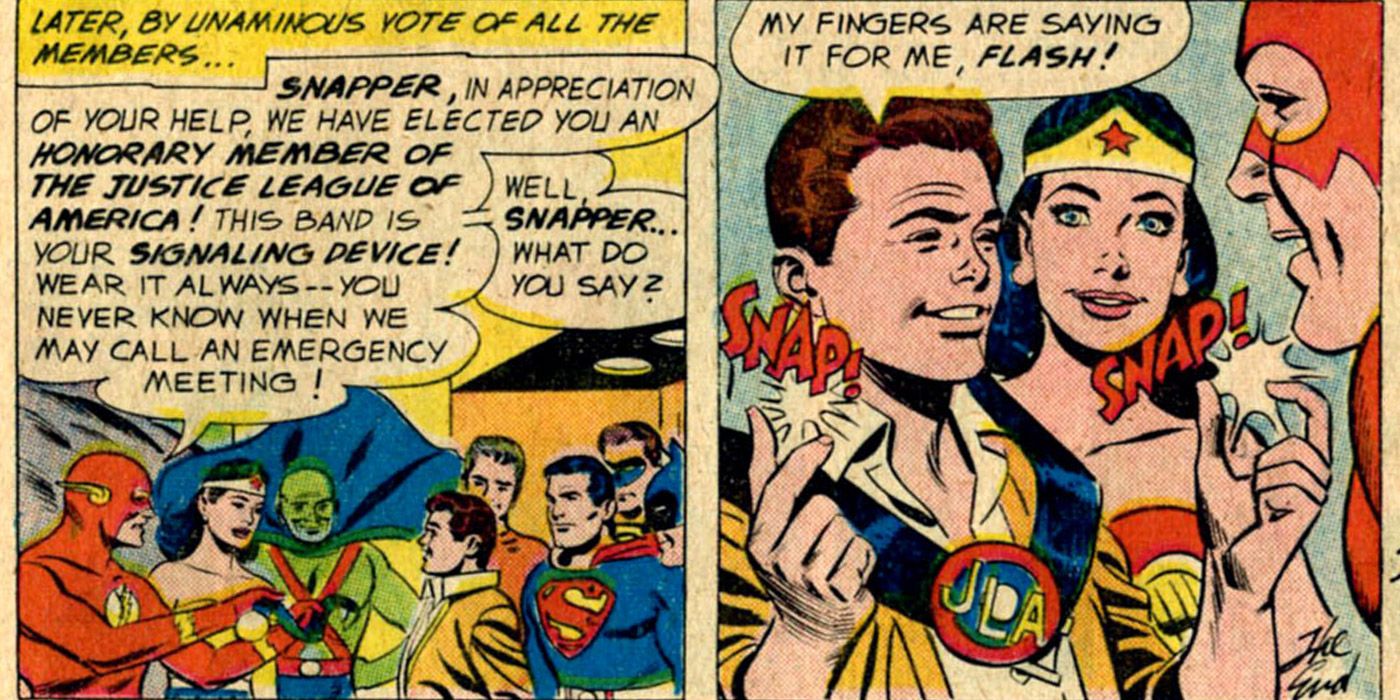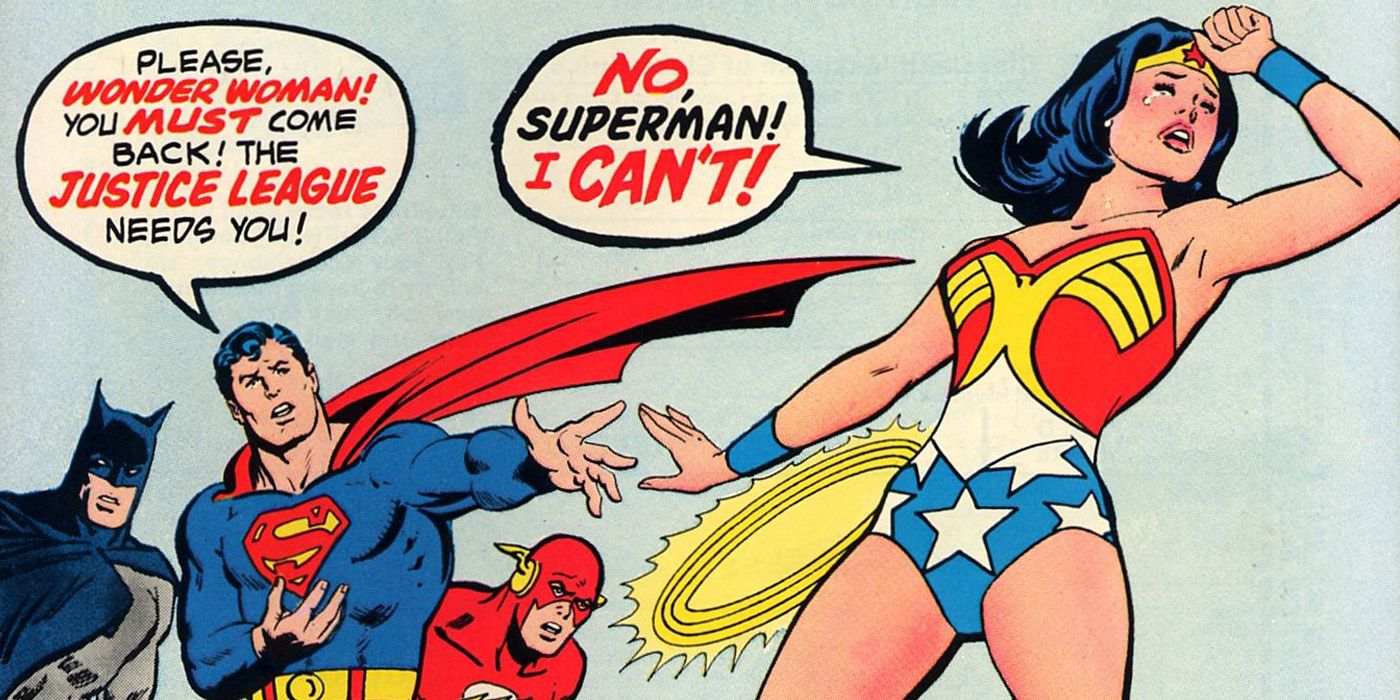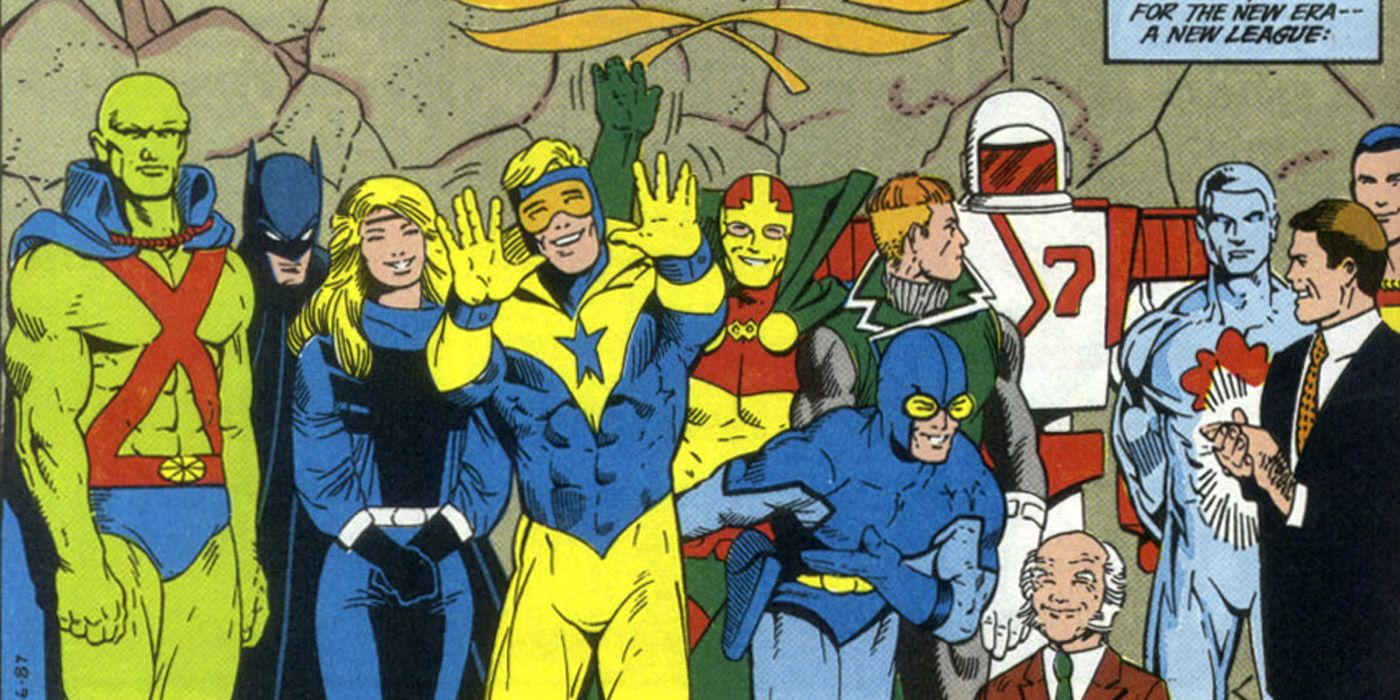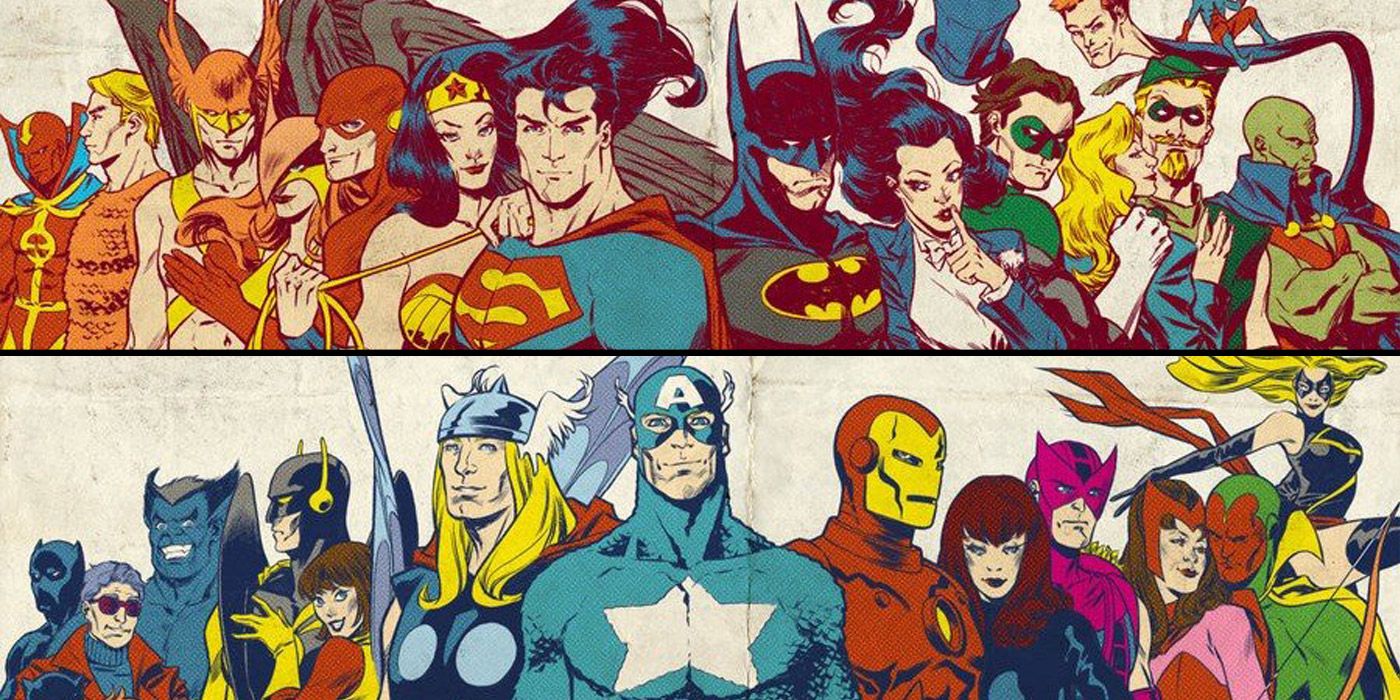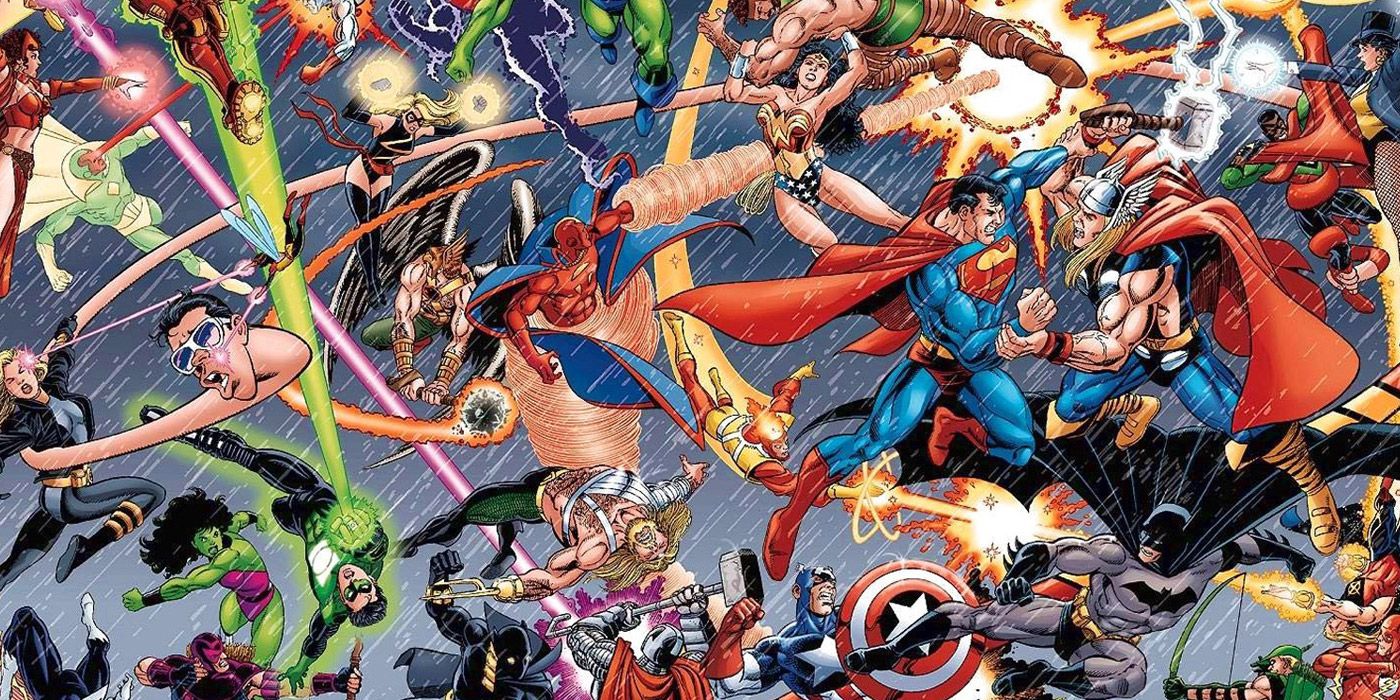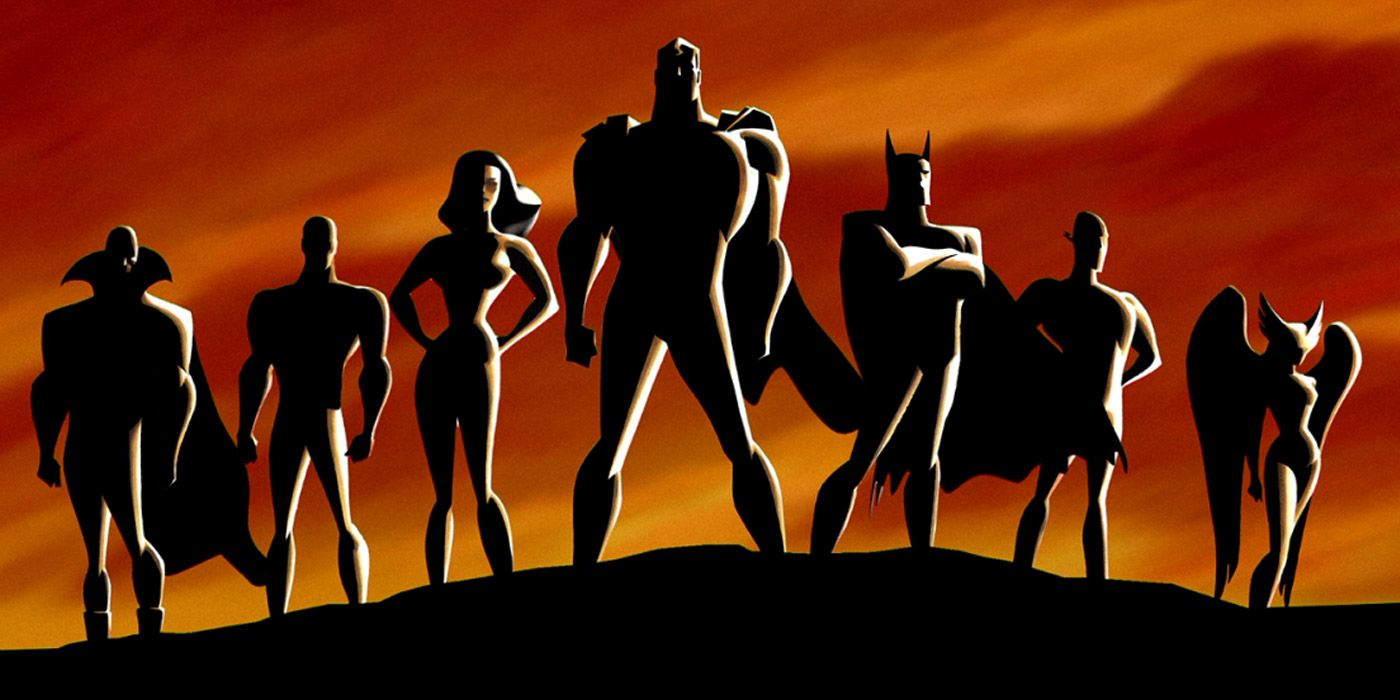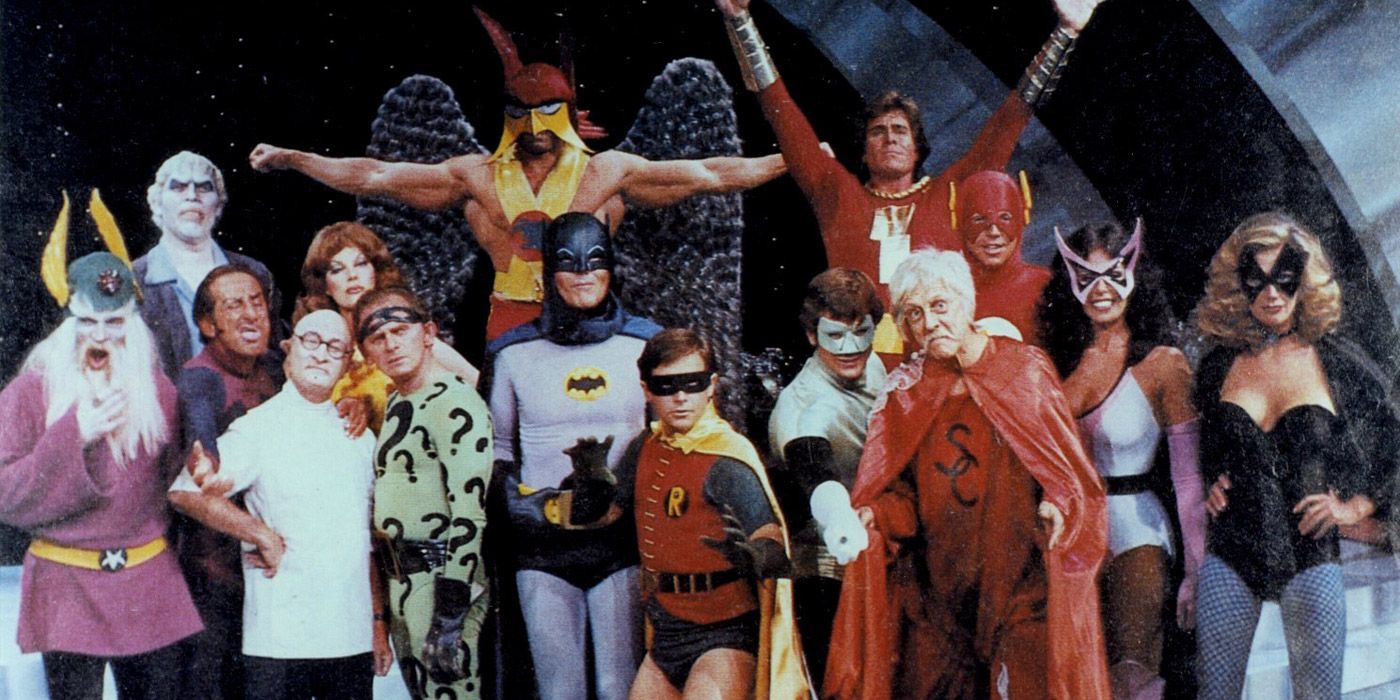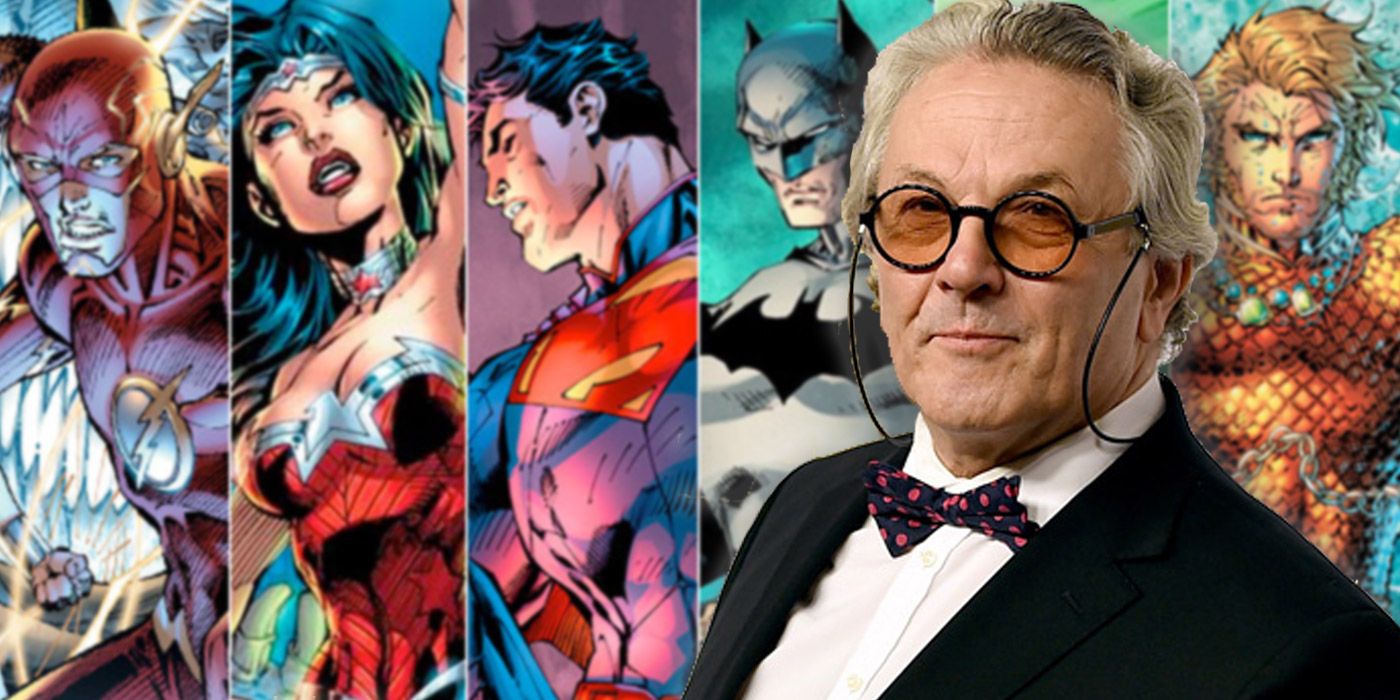The Justice League is the superhero team to end all superhero teams. Comprising Earth's greatest heroes, this squad is DC's first line of defense against whatever the universe (or Marvel) might throw our way. Their members may have changed over the years as their popularity waned in favor of more colorful lineups, but their legacy outshines all the rest, and they are poised to recapture the spotlight when Zack Snyder's highly anticipated Justice League hits theaters next year.
With a pedigree running back 70 years, the Justice League has experienced more than any other superhero team out there. From comics to cartoons and now film, their adventures are filled with enough high-flying, crime-fighting, truth-lassoing, will-constructing, speed-blitzing, boom-tubing, and dolphin-talking to make anyone's head spin. Plus there are plenty of parademons and finger snaps to surprise even the most loyal of fans.
Here are 15 Things You Didn't Know About the Justice League.
15. They Are Not the First Major Superhero Team in History
Despite what you might hear, the Justice League was not the first superhero team. That honor goes to the Justice Society of America. What's the difference? Well, for one the word “society.” But more to the point, about twenty years. The JSA debuted during the 1940s in All Star Comics with original Golden Age members Flash, Atom, Dr. Fate, Green Lantern, Hawkman, Hourman, Sandman, and the Spectre. Their first gathering was basically a Shriners meeting to swap old war stories, but it wasn't long before they were getting calls from the FBI to fly off and fight Hitler and his army of Valkyries.
Following close behind were the Seven Soldiers of Victory, a B-team of second string heroes, and the All Winners Squad, comprising some of Marvel's earliest heroes like Captain America and the Human Torch. But the JSA were the first. Unless you count Doc Savage's Fabulous Five (we don't). Of course, going even farther back there's Jason and the Argonauts, but now we're just being ridiculous. Because when we think premiere superhero teams, the Justice Society of America is it, bolstered by the fact its rotating roster included honorary members Batman, Superman, and Wonder Woman.
By the 1950s however, superheroes were fading out of popularity and the JSA disbanded. All that meant was a decade later, when comics came back into fashion, the scene was ripe for a new team to take center stage and continue their heroic legacy.
14. Their Very First Enemy Was a Starfish
By March of 1960, DC felt it was high time to modernize the JSA and so former-Justice Society creator Gardner Fox conceived of the Justice League of America. (The name was changed due the growing popularity of Major League Baseball and the National Football League.) So what better way to inaugurate the gathering of the world's greatest heroes than by having them fight a giant starfish named Starro.
The JLA first appeared in The Brave and the Bold #28 - a comic series originally intended to showcase the adventures of vikings and Robin Hood. Now you might think an alien starfish is a pretty stupid enemy for the likes of Superman and Martian Manhunter to go up against, and you'd be right. Starro, with his ability to control minds by throwing miniature versions of himself at people's faces, was completely ridiculous. But Starro would make several more appearances over the years, during which he would take over both New York and London, fight the Avengers, enslave galaxies, and, in one alternate future, conquer the entire universe. So who's laughing now?
Suffice it to say, after proving they had the chops to beat up gift-shop sea creatures, the team received their own comic when Justice League of America hit stands in October 1960.
13. There Were Seven Original Members
When the Justice Society was created there was an in-house rule that members could not have their own comic titles, which is why the likes of Batman, Superman and Wonder Woman were considered “honorary members.” When the Justice League of America rolled around however, everything was fair game and the team was stocked with the best of the best that the DCU had to offer.
What many outside loyal fans may not know and, which all of us will probably forget once the upcoming Justice League film premieres, is that the team's seven original members were Aquaman, Batman, the Flash, Green Lantern, Martian Manhunter, Superman, and Wonder Woman. Unlike the Avengers, who have seen frequent massive overhauls of their ranks, the JLA has remained enduringly consistent over the years, with only a few small changes, or additions, made here and there over time. Or at least that was the case until...
12. Aquaman Disbanded the Original Team and Moved it to Detroit
During the Silver Age, the Justice League of America was expanded to include Green Arrow, Hawkman, Black Canary, and Atom. By the '70s, Wonder Woman had left (only to return later) while Elongated Man, Hawkgirl, Firestorm, and a few others came on board. In 1984, the JLA went through its biggest shift when Aquaman threw a hissy fit and kicked out all the comic's coolest characters.
After most of the original members failed to help fend off yet another alien invasion, Aquaman makes the call to dissolve the League and rewrite its charter. The new rules decreed that only heroes who could devote their full-time to the JLA could be admitted as members. What remained was an entirely new and stupid Justice League consisting of Aquaman, Martian Manhunter, Zatanna, Elongated Man, and a crop of teenage heroes no one cared about named Vixen, Gypsy, Vibe, and Steel (no, not that Steel). This was DC's effort to try and make its offerings seem more hip and contend with Marvel's youthful X-Men, hence we got a lot of scenes involving breakdancing.
Ironically, babysitting this new crop of wannabe heroes was too much for Aquaman so he ended up ditching the team after a year to go hang out in Atlantis, though not before capping off a string of epically poor decisions by moving the JLA headquarters to Detroit.
11. They Have Had Secret Bases in Outer Space and Rhode Island
The JLA's headquarters in Detroit was a bunker that Steel's grandfather had bought during the Great Depression, or something. The whole point of moving there was for the JLA to prove more relatable to the “common man.” Suffice to say, the Justice League during its Detroit Years was a joke both on and off the page, and the whole period was a low point in their history. Which is amazing when you consider their first headquarters was an underground cave located in Happy Harbor, Rhode Island.
As ridiculous as that New England location might seem, the Secret Sanctuary was actually an awesome superhero base. Even after the League abandoned it, they and several other superhero teams would return now and again as a rallying point or place to crash when they did't have anywhere else to stay. Though even cooler than their Rhode Island cave was the team's next HQ.... in Space! This base was a massive orbiting satellite 22,300 miles above Earth financed by Bruce Wayne. It was retrofitted with teleportation devices that could transport League members all over the planet and provided a blueprint for their second satellite base popularly known as the Watchtower. All and all, these earlier headquarters made Detroit look even more stupid than it already was.
10. They Have a Team Mascot Named Snapper
Ah yes, Lucas “Snapper” Carr - the honorary eighth member of the original Justice League. Or, as he's better known, the Jar Jar Binks of comics. Carr is how DC creatives viewed 1960 teenagers, right down to his hip dialogue (“Wait'll daddy-o casts his orbs on this!”) and incessant finger snapping. To say the least, everyone immediately hated Snapper. Except for the Justice League, who, after he helped them stop Starro the Starfish from conquering Happy Harbor, named Snapper as their official team mascot. Which meant right from the start, you had this oblivious teenager sitting in on secret meetings with the Earth's greatest heroes, which was just bizarre.
Snapper ranks as probably one of the most annoying sidekicks in history. Don't believe us? The reason why the JLA had to leave the amazing Secret Sanctuary was because Snapper betrayed its location to the Joker - a snafu that thankfully led to his resignation from the team. But don't get too happy about it. DC brought him back several years later, only now he's a member of a spy agency and able to teleport with his snaps.
9. Wonder Woman Underwent a Self-Imposed Hazing to Rejoin the Team
Wonder Woman is one of the most iconic superheroes ever created. Which makes it even crazier that when she first appeared in comics she was a receptionist. That's right, when the Amazonian princess appeared early on in All-Star Comics, she inevitably came into contact with the Justice Society of America. So impressed were they by her superheroic abilities that the team offered to her a job.... as their secretary.
Granted that happened during the '40s, when the whole women-stay-home-while-boys-go-out-and-play thing was common place. But then what's the excuse when, in the 1970s, Wonder Woman was put through a hazing ritual just so she could rejoin a team that she was an original founding member of? As mentioned earlier, Diana left the team for a while because her powers had been stripped and she spent the better part of a decade running a trendy fashion boutique in Greenwich Village. When she regained her powers, the JLA was more than happy to let her back in, but she would do so only on one condition - that they let her prove her worthiness by undergoing twelve deadly trials in the vein of Hercules' labors.
So let's get this straight: the Justice League felt it right for Wonder Woman to nearly die twelve times over in order to become a member while they just let Lucas Carr in on a whim because he snaps his fingers a lot. Who cares if it was her idea, that just seems wrong.
8. There Are Many Different Justice League Teams
The American Justice League hasn't been the only JL game in town, as evidenced by the recent addition of the Justice League of China. After Aquaman left the team in Detroit, Martian Manhunter took over as leader. Unfortunately, his reign saw the team beaten not once, but twice by Darkseid and Professor Ivo, which led to everyone abandoning the JLA. That left Martian Manhunter as its only member, sadly proclaiming, “the League must continue.” And continue it did, only this time the JL went global.
The Justice League International gave the team a more worldly mandate and provided an opportunity to bring recently acquired characters outside DC into the fold, like Blue Beetle, Mister Miracle, and Shazam. It also meant writers could turn the team into a head-smacking slapstick comedy routine headlined by Batman and Guy Gardner. Overall the team spent more time bickering than it did protecting, which inevitably led to the split into the Justice League of Europe and a new Justice League of America.
Later DC added yet another team to the mix with the Justice League Task Force, led by the no longer lonely Martian Manhunter. Ultimately all three titles competed with one another and were cancelled to make way for the return of the JLA heavy hitters in 1996. But then, having not learned their lesson, a confusing mess of others squads were formed in the likes of Justice League Elite, Formerly Known as the Justice League and Cry for Justice, not to mention the return of another Justice League International.
Of course all that was erased when the New 52 narrowed the field to a revamped JLI and the return of the original, albeit slightly changed, Justice League. But that's another story...
7. Their Upcoming Live-Action Film is Inspired by the New 52
To be clear, Zack Snyder's highly anticipated Justice League will draw from a lot of sources. After all, Batman v Superman was heavily inspired by The Dark Knight Returns, The Death of Superman, and a bunch of other comics, including Injustice: Gods Among Us. But one of the biggest inspirations on the DCEU, going right back to Man of Steel, is the New 52. Not only was Superman's costume based on the comic reboot, it also influenced the overall somber, angry tone of that film.
The new Justice League movie will go one step further and rip major aspects of its plot right from the pages of the New 52, particularly the series that launched the reboot - 2011's Justice League. Not so coincidentally, that book was penned by Geoff Johns, who is now in charge of the DCEU. Perhaps the most noticeable difference is the inclusion of Cyborg, who was never part of any comic's Justice League until the New 52. In that reimagining, Cyborg is a founding member whose origin story is tied to the Mother Boxes - the cosmic relics that will play a big part in Snyder's film. Justice League's first issue opens with Batman fighting parademons, spurring him to unite the world's greatest heroes against an oncoming invasion led by Darkseid. What's more, in an alternate New 52 universe, Steppenwolf leads a similar invasion of Earth-2 on orders from the Master of Darkness. Sound familiar?
But now that the bleak world of the New 52 has been discarded and revealed as the doings of the Watchmen , don't count out the influence of Rebirth. Especially since its return to cheerful, optimism seems to mirror the direction Johns wants to take the DCEU.
6. They Helped Create the Fantastic Four and the Avengers
Being one of the first superhero teams, and arguably the most popular, it's not hard to imagine that the Justice League would have a major influence on the history of comics. Surprisingly though they played a direct role in creating what became their greatest adversary - the Avengers.
Right from the start the JLA was a bread winner for DC. All that money rolling in naturally caught the eye of their competitors, specifically publisher Martin Goodman and his Timely Comics. Goodman ordered his chief writer Stan Lee to follow their example and come up their own superteam. Lee grabbed budding artist Jack Kirby and together the two had a brainstorming session. The result was Fantastic Four #1 - a moment that is considered the birth of modern Marvel comics. The monumental success of that series led to the creation of an abundance of other heroes including Iron Man, Thor, and the Incredible Hulk. Then, once he felt they had enough individual superheroes in the lineup, Stan Lee doubled down on the Justice League's winning formula and created the Avengers.
5. They Fought Alongside the Avengers
Superhero team-ups don't get any more epic than 2003's Justice League/Avengers crossover. Since comics started to come into their own during the '70s, meetings between the two powerhouses were commonplace, and usually ridiculous. That's why it came as no surprise in the early '80s when a crossover of their best squads was in the works. Ultimately, that project fell through due to editorial disputes. It wasn't until the new millennium that these plans were realized and the era of crossovers reached its capstone.
The premise brought the two teams together to defeat a time-traveling DC supervillain known as Krona, who transported himself to the Marvel Universe in search of the truth of creation. So monumental was the event DC and Marvel haven't collaborated on anything since. Or maybe they just don't want to play together anymore.
Creators Kurt Busiek and George Pérez developed an action-packed four issue series that saw the two teams fight each other, join forces, play with one another's toys (think Superman wielding Mjolnir and Captain America's shield), and amazingly incorporate every version of every member either team had ever known. The run was chock-full of fanservice but at the same time delivered a well-structured plot. Krona and Marvel's The Grandmaster bet on whose universe is better, with each choosing the other side's elite superhero team as their champion. In the end, the JLA wins by default, but Krona refuses to accept defeat. This leads to the JLA and Avengers teaming-up to restore everyone's reality to normal. In the end everyone, including Krona, somehow comes out a winner-- not least the fans.
4. They Were Once Renamed the “Super Friends” Because of Vietnam
In 1973, DC decided the world needed a kid-friendly version of the Justice League of America. So famed animation studio, Hanna-Barbera,was enlisted to create a Saturday morning cartoon inspired by Earth's greatest heroes. The show's original lineup featured Superman, Batman, Wonder Woman, Robin, and Aquaman, along with two pointless teenagers named Wendy and Marvin, and the team's pet, Wonder Dog.
Now you may be thinking the reason why the team was called “Super Friends” was to tailor it to younger audiences, but you'd be wrong. When Hanna-Barbera licensed the rights to the JLA, it feared their name was too aggressively patriotic in light of the Vietnam War. To be fair, the show's creators made a slew of asinine decisions in an effort to rake in more money, like when they invented four characters to make the show seem less Aryan. These included Apache Chief, Samurai, El Dorado, and Black Vulcan (actual names).
Regardless of the title it went by or how many racial stereotypes it propagated, Super Friends was a smash hit, not to mention the first big introduction of comic book superheroes into the mainstream. Airing 109 episodes over 13 years, it finally came to an end in 1986 with the revamped The Super Powers Team: Galactic Guardians, which was ahead of its time in including Cyborg as a member. Though don't worry, that was far from the Justice League's last foray into the world of animation.
3. They Have Starred in 3 Animated Series and 8 Animated Movies
While the Justice League haven't had much success in live-action up to now, the same can't be said for animation. Aside from the popular Super Friends, the team has starred in two distinct TV series and and eight non-theatrical animated films. And that doesn't even include their appearances in Lego Batman, Justice League vs Bizarro League, and Superman: Doomsday.
The most well-known of these animated efforts is 2001's Justice League, which aired on Cartoon Network for two seasons and was re-worked as Justice League Unlimited for another three. Like its predecessor this show exposed a whole new market to the team, bolstered by a spinoff series, Young Justice.
But the films are where the 2-D Just Lice really shine. If you're like us and can't wait for Snyder's Justice League to hit theaters, we recommend checking out one of their newest outings, Justice League: War. Inspired by the New 52, you'll find everything from parademons and Mother Boxes to an Apokoliptan invasion. Though our favorite Justicre League film, which ranks as one of DC's greatest animated ventures, is Justice League: The Flashpoint Paradox. But maybe that will change with their upcoming ninth title, Justice League Dark.
2. They've Made Several Awful Live-Action Appearances
As we hinted above, the Justice League has appeared in the flesh before. The reason you might not be aware is because those appearances were awful. The most recent came during the latter seasons of the teen series, Smallville, where the team occasionally helped Clark Kent mope over things. Before that there was the infamous 1979 TV special Legends of the Superheroes, starring Adam West, karate master Burt Ward, the elderly Scarlett Cyclone, cheaply made costumes, Ed McMahon, Weather Wizard, and, of course, Ghetto Man. Whereas Super Friends was the pinnacle of the Justice League's television success, the live-action specials that the cartoon inspired were indisputably their most heinous. What could be worse than that? Well, since you asked....
The year of 1997 was a low point for comic superheroes. That's when the world was exposed to the nipples of Batman & Robin and Superman turned into a blue lightning bolt. Still, its most embarrassing moment was a failed 1997 TV show centered on a meteorologist named Tori that included mock-interviews with Justice League members talking about their lives. Imagine Friends meets the Justice League. The pilot was universally panned and never aired in the US, and could easily be mistaken as an unintentional joke. Not enough adjectives exist to describe how awful it was and if you don't want to have your eyes implode, it's best to stay away.
1. The Upcoming Film was Originally Going to Be Directed by George Miller with a Different Cast
Development of a Justice League film began back in 2007 when Warner Bros. hired George Miller (best known for his Mad Max films) to direct a script titled Justice League: Mortal. That film came very close to becoming a reality and was even fully cast at one point, which we'll learn more about in an upcoming documentary about the production.
Armie Hammer (of Lone Ranger fame) would play Batman. Relative unknowns D.J. Cotrona and Santiago Cabrera would play Superman and Aquaman, respectively. Model Megan Gale would play Wonder Woman (after Jessica Biel turned down the role). Adam Brody would be the Flash. The actor who portrayed the bad guy in Mad Max: Fury Road was set for Martian Manhunter. And, in probably its best casting choice, rapper Common would play John Stewart's Green Lantern. For better or worse, all that went by the wayside once the writer's strike hit and Miller recast the entire film using Australian natives. After several more missteps and Miller leaving do other things, the film was ultimately shelved. The lackluster Green Lantern film and several failed attempts to bring both Wonder Woman and Flash to the big screen probably didn't help.
After the box office success of Man of Steel, the JL film finally got its second chance and the reins were handed over to Zack Snyder. No matter what Justice League: Mortal would have looked like or what will happen with Snyder's upcoming version, one thing's for sure - neither could ever be worse than that 1997 TV pilot.
---
Justice League opens in theaters on November 17, 2017.
Do you know of any other little known Justice League trivia? Tell us in the comments.

